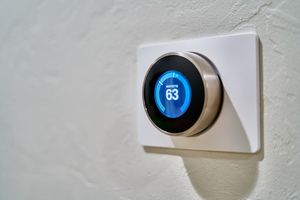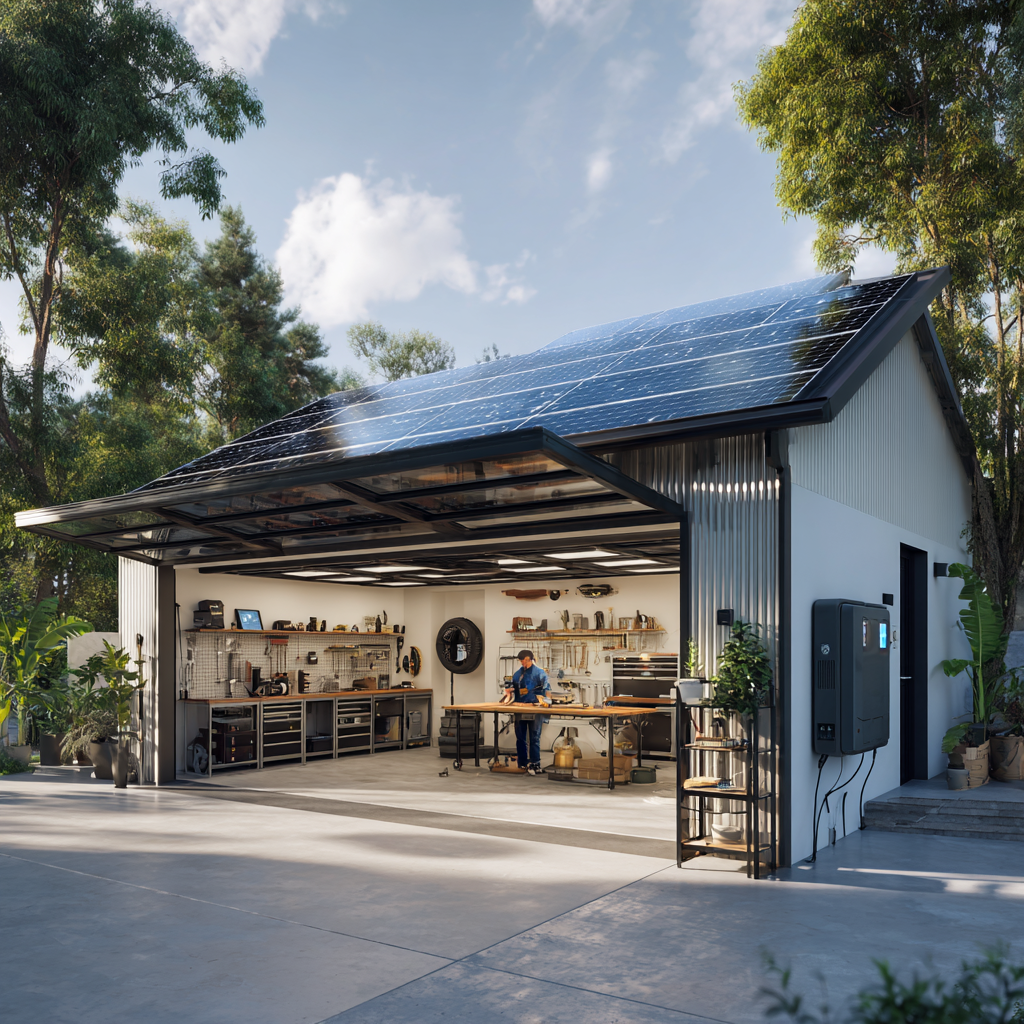Smart Thermostats - Energy Savings and Comfort in 2025

Transform Your Home Into a Smart Paradise - 2025 Guide
Discover the latest smart home technology that will revolutionize your daily routine.
Heating accounts for up to 70% of energy costs in households. Smart thermostats can reduce these costs by 20-30% without losing comfort. In this guide, I'll show you how to choose, install, and optimally set up a smart thermostat for your home.
How Do Smart Thermostats Work?
Smart thermostats are advanced devices that replace classic room thermostats. Compared to traditional thermostats, they offer:
- Learning your habits - adapt heating to your routine
- Remote control - change temperature from anywhere via phone
- Presence detection - turn off heating when no one is home
- Weather forecast - adapt heating to outdoor conditions
- Detailed statistics - overview of consumption and savings
Smart Thermostat Types by Heating System
1. For Gas Boilers
Suitable models:
- Nest Thermostat ($240-320)
- Honeywell T6 ($120-160)
- Netatmo Smart Thermostat ($160-200)
2. For Electric Heating
Recommended thermostats:
- Shelly TRV ($60-80/radiator)
- Tado Smart Radiator ($80-100)
- Danfoss Eco ($72-88)
3. For Underfloor Heating
Specialized models:
- Warmup 4iE ($180-220)
- Devi Smart ($140-180)
- Heatmiser neoStat ($120-160)
4. For Heat Pumps
Compatible solutions:
- Loxone Room Controller ($320-400)
- KNX thermostats ($200-320)
- Most manufacturers have their own smart solutions
How to Choose the Right Thermostat
Pre-Purchase Checklist
Heating Type
- Gas boiler (on/off or modulating)
- Electric direct heating
- Underfloor heating
- Heat pump
Boiler Compatibility
- Dry contact (most boilers)
- OpenTherm protocol (more efficient)
- Proprietary protocols (Vaillant eBUS, Bosch EMS)
Power Supply
- 230V (requires electrician)
- 24V from boiler
- Battery (easier installation)
Features You Want
- Geolocation
- Voice control
- Ecosystem integration (Apple HomeKit, Google Home)
- Open window detection
Installation Step by Step
Preparation
Required tools:
- Screwdriver
- Voltage tester
- Drill with bits
- Level
- Possibly electrical pliers
Safety Warning
⚠️ IMPORTANT: Always turn off electrical supply at breaker and boiler before installation!
Installation Process (Nest Thermostat example)
Remove Old Thermostat
- Photo the cable connections
- Label cables according to terminals
- Disconnect cables
- Unscrew old thermostat
Mount Base
- Place base on wall
- Level with spirit level
- Mark holes for drilling
- Drill holes and insert anchors
- Screw on base
Connect Wiring
Typical connections: - COM/C = common wire - NO/Call = heating call - L = live (230V models) - N = neutral (230V models)Complete Installation
- Mount thermostat on base
- Turn on breaker and boiler
- Follow app setup wizard
Radiator Head Installation
For radiator heads, installation is simpler:
- Remove old head (usually bayonet M30x1.5)
- Install adapter (if needed)
- Screw on smart head
- Pair with app
Setup and Optimization
Basic Settings
Create Heating Schedule
Recommended schedule: - Morning (6:00): 70°F - Leave (8:00): 64°F - Return (4:00): 70°F - Night (10:00): 64°F Weekend: - All day: 70°F - Night: 64°FSet Setback Temperature
- Daily setback: 63-64°F
- Night setback: 61-64°F
- Vacation: 54-59°F
Calibration
- Measure actual temperature with thermometer
- Adjust offset in settings (usually ±5°F)
Advanced Features
Geofencing (Location-based)
Settings:
- Radius: 0.3-0.6 miles from home
- When leaving: lower by 5°F
- When returning: start heating 30 min ahead
Adaptive Learning
- Thermostat learns how long it takes to heat up
- Automatically adjusts start times
- Optimal operation after 1-2 weeks
Open Window Detection
- Rapid temperature drop = open window
- Automatic heating shutdown
- App notification
Weather Integration
- Sunny day forecast = less heating
- Windy day = heat loss compensation
Real Savings - Case Studies
750 sq ft Apartment with Gas Boiler
- Before: $960/year for gas
- After: $720/year
- Savings: $240/year (25%)
- Payback: 1 year
1600 sq ft House with Heat Pump
- Before: $1400/year electricity
- After: $1040/year
- Savings: $360/year (26%)
- Payback: 1.5 years
Older 2150 sq ft House with Radiators
- Before: $1800/year
- After: $1320/year
- Savings: $480/year (27%)
- Payback: 2 years
Best 2025 Thermostats
Premium Segment
Google Nest Learning (3rd generation)
- Price: $300
- Pros: Beautiful design, learning algorithms, easy installation
- Cons: Higher price, requires C-wire
Honeywell Evohome
- Price: $320-480 (with heads)
- Pros: Zone control, color display
- Cons: More complex installation, expensive
Mid-range
Netatmo Smart Thermostat
- Price: $180
- Pros: Elegant design, OpenTherm, Apple HomeKit
- Cons: Smaller display
Tado V3+
- Price: $200
- Pros: Excellent app, geofencing included
- Cons: Some features require subscription
Budget
Meross MTS200
- Price: $100
- Pros: Low price, HomeKit support
- Cons: Basic features
Shelly TRV Kit
- Price: $72/head
- Pros: Local control, open-source
- Cons: Requires technical knowledge
Common Problem Solutions
Thermostat Won't Turn On Boiler
- Check cable connections
- Verify boiler type setting in app
- Try manual test in menu
Unstable WiFi Connection
- Move router closer
- Use WiFi extender
- Change WiFi channel to less crowded one
Inaccurate Temperature
- Calibrate thermostat
- Don't place near heat/cold sources
- Ensure free air circulation
Short Boiler Cycles
- Set minimum run time
- Increase hysteresis (0.9-1.8°F)
- Use OpenTherm instead of on/off
Smart Home Integration
Google Home
"Hey Google, set temperature to 72 degrees"
"Hey Google, turn off heating"
"Hey Google, what's the temperature at home?"
Apple HomeKit
- Siri control
- Automation with other devices
- Secure end-to-end encryption
Amazon Alexa
"Alexa, increase temperature by 3 degrees"
"Alexa, switch to eco mode"
Home Assistant
climate:
- platform: nest
client_id: YOUR_CLIENT_ID
client_secret: YOUR_CLIENT_SECRET
automation:
- alias: "Heating by presence"
trigger:
platform: state
entity_id: group.family
to: 'not_home'
action:
service: climate.set_temperature
data:
entity_id: climate.living_room
temperature: 64Maintenance and Care
Regular Maintenance
- Monthly: Battery check (battery models)
- Quarterly: Dust cleaning
- Annually: Temperature calibration
- Before season: Functionality test
Battery Replacement
- Use quality alkaline or lithium batteries
- Replace all at once
- Some models report battery status in app
Legislation and Rebates
2025 Grant Programs
- Energy Star Rebates: Up to 50% of costs
- Boiler replacement programs: Part of boiler upgrade
- Local utility rebates: Check with provider
Rebate Requirements
- Installation by certified technician
- Compatibility with renewable sources
- Energy Star rating or better
Conclusion
Smart thermostats are one of the fastest ways to energy savings. Investment of $120-320 pays back within 1-2 years and control convenience is priceless. Start with a simple model and gradually expand with radiator heads for zone control.
Golden rule: Lowering temperature by 2°F = 6% heating cost savings.
Related Articles
Smart Home Upgrade Package 2025
Transform your home with the latest smart technology
Transform Your Home Into a Smart Paradise - 2025 Guide
Discover the latest smart home technology that will revolutionize your daily routine.

